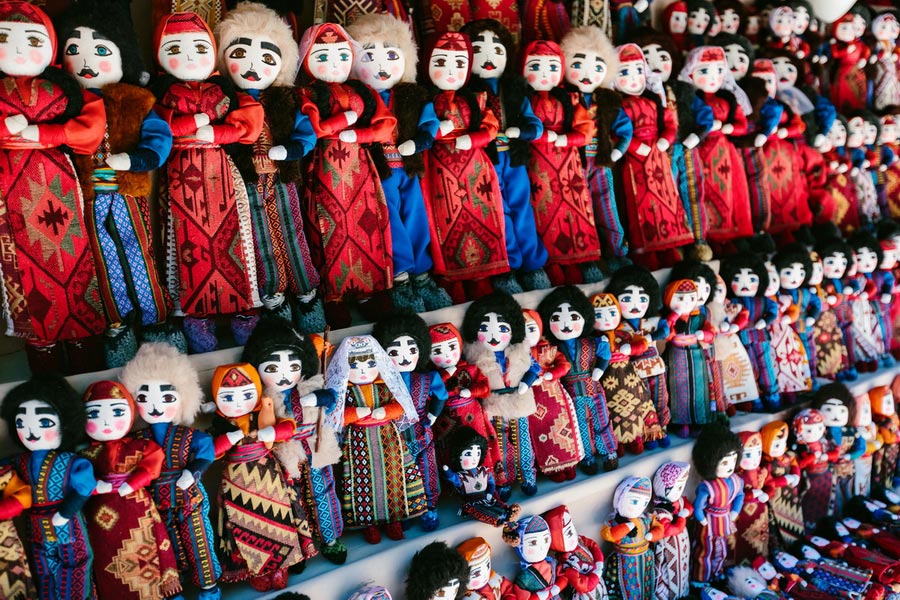Armenian Folklore

Armenian folklore has been preserved through fairy tales, legends, folk songs, proverbs, riddles and epics, many of which have their roots in pre-Christian Armenian culture. With the invention of the Armenian alphabet, folklore found its way into written literature through gifted authors such as Movses Khorenatsi, Agathangelos, Eznik of Kolb, Sebeos and Anania Shirakatsi, whose works have had profound impact on modern Armenian culture.
In its earliest days, Armenian folklore absorbed Anatolian, Hurro-Urartian, Mesopotamian, Iranian, Roman and Greek philosophies. Pre-Christian Armenia is believed to have worshipped gods and creatures associated with natural phenomena. Most notable were Areg (Ar), a personification of the Sun, Astlik the goddess of fertility and Vanatur the god of hospitality.
After the Persians gained dominance in Armenia in the 1st millennium BC, Zoroastrianism began to heavily influence Armenian culture. The supreme god of Armenia became Aramazd, a derivative of Ahura Mazda. Together with Anahit the goddess of fertility and Vahagn the god of fire and thunder, the three formed a powerful triad. During the Hellenistic period, many of these deities became associated with Greek gods, and thus Aramazd became Zeus, Vahagn evolved into Hercules and the Armenian goddess Anahit became Artemis or Aphrodite.
Armenian folklore creatures included many mythical monsters and spirits. Most notable among these were vishaps, dragon-like water spirits who inhabited Mount Ararat and created storms as they moved between earth and sky. Ancient Armenians believed vishaps lived in large groups around ponds and other water sources, and thus their depictions were commonly carved from a single slab of stone into cigar-like shapes with fish or serpent heads.
After Armenia’s formal adoption of Christianity in the 4th century AD, the ancient myths of Armenian paganism were modified so as to be palatable with Christian belief, with Biblical characters assuming the functions of the pagan gods and spirits. John the Baptist, for example, inherited traits once attributed to Vahagn and Tir. Post-Christian Armenian legends also introduced many heroes and monarchs, some of which were simply carryovers from pre-Christian mythology. It was during this time that the Armenians gained Hayk, legendary patriarch of the Armenian people and the great-grandson of Noah who is said to have led a successful rebellion against a Babylonian king named Bel.
Among the many epics which played a central role in Armenian folklore, none is as popular as Daredevils of Sassoun, an 8th-century oral tale of David of Sassoun and his fight against the Arabs. Daredevils was first converted to written form in 1873 by Garegin Srvandztiants. In 1902, prominent Armenian author Hovhannes Tumanyan penned a poem of the same name in which he recounts the story of David of Sassoun using modern language. Although “David of Sassoun” is the name of only one of the poem’s four acts, due to the character's popularity the entire epic is referred to as such. In 2010, famed director Arman Manaryan produced the animated film “Sasna Tsrer” which illustrates the first three cycles of Daredevils of Sassoun. Two year later, the epic was added to UNESCO’s Intangible Cultural Heritage List.

